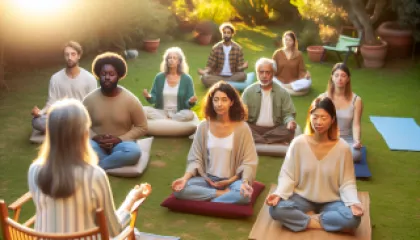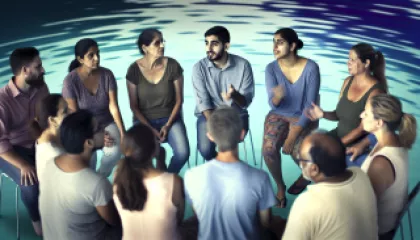The Ultimate Guide to Understanding Gender Identity
The Ultimate Guide to Understanding Gender Identity
Gender identity is a complex and deeply personal aspect of our individual and collective human experience. It encompasses the inner sense of being male, female, neither, or somewhere on the expansive spectrum between the binary. As our understanding of gender identity has evolved over time, it's crucial that we approach this topic with empathy, openness, and a commitment to learning.
In this comprehensive guide, we'll explore the nuances of gender identity, the journey of self-discovery, and the importance of creating a more inclusive and supportive society for people of all gender identities. Whether you're seeking to better understand your own identity or support loved ones on their journey, this guide aims to provide a solid foundation for navigating the complexities of gender.
Defining Gender Identity
At its core, gender identity refers to an individual's deep-seated, internal sense of being male, female, neither, or somewhere in between. It is a fundamental part of who we are, and it may or may not align with the sex we were assigned at birth.
Gender identity is distinct from biological sex, which is typically determined by the presence of specific physical characteristics at birth, such as genitalia, chromosomes, and hormones. While these two concepts are often conflated, it's important to recognize that gender identity is a personal and social construct, while biological sex is a biological classification.
Beyond the traditional male-female binary, gender identity exists on a fluid and expansive spectrum. Some individuals may identify as non-binary, genderfluid, agender, or use other terms to describe their unique gender identity. It's crucial to acknowledge and respect the diversity of gender experiences and expressions.
The Journey of Gender Identity
Exploring and understanding one's gender identity is a deeply personal and often complex process. For many, this journey begins in childhood, as they start to become aware of their internal sense of gender and how it may or may not align with societal expectations.
Some individuals may experience a strong and persistent sense of their gender identity from a young age, while others may discover or redefine their identity over time. The process of gender identity development can involve self-reflection, experimentation, and sometimes, a need to challenge societal norms and expectations.
It's important to note that the journey of gender identity is not linear or uniform. Each person's experience is unique, and it's crucial to respect and support individuals as they navigate this personal exploration.
The Importance of Acceptance and Validation
Understanding and accepting one's gender identity can be a profound and empowering experience. However, it is often accompanied by challenges, particularly in a society that has historically been oriented towards a binary view of gender.
Individuals who identify as transgender, non-binary, or outside the gender binary may face discrimination, social stigma, and even legal barriers to accessing resources and services that affirm their identity. This can lead to feelings of isolation, anxiety, and depression, underscoring the critical need for increased awareness, acceptance, and support.
By cultivating a culture of empathy, understanding, and validation, we can create a more inclusive and affirming environment for people of all gender identities. This not only benefits those on the gender identity spectrum but also enriches our collective understanding of the human experience.
Supporting Gender Identity Development
Supporting individuals on their gender identity journey is a multifaceted process that involves creating safe spaces, fostering open communication, and providing access to resources and services.
Creating Safe Spaces
Establishing safe spaces where individuals can explore and express their gender identity without fear of judgment or discrimination is crucial. This may involve providing gender-neutral bathrooms, inclusive dress codes, and policies that protect the rights and safety of people of all gender identities.
Fostering Open Communication
Encouraging open and non-judgmental dialogue about gender identity can help foster understanding and dispel misconceptions. This can involve educating oneself and others, using inclusive language, and actively listening to the experiences and perspectives of those on the gender identity spectrum.
Providing Access to Resources and Services
Ensuring access to resources and services that support the unique needs of individuals on the gender identity spectrum is essential. This may include access to gender-affirming healthcare, counseling and therapy services, legal support, and social and community networks.
Challenging Gender Norms and Stereotypes
Challenging gender norms and stereotypes is a crucial step in creating a more inclusive and equitable society. Gender identity is a spectrum, and it's important to recognize that traditional notions of masculinity and femininity do not encompass the full breadth of human experience.
By questioning and dismantling rigid gender roles and expectations, we can create space for individuals to express their identity freely and authentically. This may involve challenging societal narratives that equate certain behaviors, interests, or appearances with a particular gender identity.
Embracing the diversity of gender expression and challenging the binary can lead to a more empowered and self-actualized society, where individuals are free to explore and define their own sense of identity without fear of judgment or discrimination.
The Intersection of Gender Identity and Intersectionality
Gender identity intersects with other facets of identity, such as race, ethnicity, socioeconomic status, and disability, creating a complex web of experiences and challenges. Recognizing and understanding these intersections is crucial for providing holistic and inclusive support.
Individuals who hold multiple marginalized identities, such as being transgender and a person of color, may face compounded discrimination and barriers to accessing resources and services. It's important to acknowledge and address these intersections to ensure that gender identity support is equitable and inclusive.
By adopting an intersectional lens, we can better understand the nuanced and layered experiences of individuals on the gender identity spectrum, and work towards creating a more just and equitable society for all.
The Role of Allies and Advocates
Allies and advocates play a vital role in supporting and uplifting individuals on the gender identity spectrum. Allies are those who use their privilege and platform to amplify the voices and experiences of the gender-diverse community, while advocates actively work to create systemic change and ensure the rights and well-being of people of all gender identities.
Becoming an ally or advocate involves educating oneself, using inclusive language, challenging gender norms and stereotypes, and actively supporting and advocating for the gender-diverse community. This can take many forms, from speaking up against discrimination to supporting legislation that protects the rights of transgender and non-binary individuals.
By cultivating a network of allies and advocates, we can create a more inclusive and supportive environment for people of all gender identities, empowering them to live authentically and thrive.
Conclusion: Embracing the Fluidity of Gender Identity
Gender identity is a complex and multifaceted aspect of the human experience, one that is constantly evolving and expanding our understanding of the human condition. By embracing the fluidity and diversity of gender identity, we can create a more inclusive, empathetic, and supportive society that celebrates the full spectrum of human expression.
Through education, open dialogue, and a commitment to challenging societal norms and biases, we can foster a world where individuals of all gender identities are celebrated, validated, and empowered to live their authentic lives. This is not only a matter of upholding human rights and dignity but also an opportunity to deepen our collective understanding of the rich tapestry of gender identity and expression.
As we continue on this journey of understanding and growth, let us remain steadfast in our commitment to creating a more inclusive and affirming world for people of all gender identities. By walking this path together, we can transform our communities, our institutions, and our very conception of what it means to be human.






